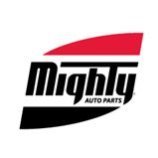-
Welcome to Auto Parts Forum
Whether you are a veteran automotive parts guru or just someone looking for some quick auto parts advice, register today and start a new topic in our forum. Registration is free and you can even sign up with social network platforms such as Facebook, X, and LinkedIn.
Why You Should Recommend High-Quality Oil Filters - Video
-
Similar Content
-
Similar Topics
-
By jack wilson
As a truck owner, maintaining your vehicle's health is crucial to its longevity and performance. One of the most important aspects of truck maintenance is regular oil changes. In this blog, we'll explore the benefits of regular truck oil changes and answer the question, "What are the benefits of regular link hidden, please login to view?" Here are the top 8 facts you need to know.
-
By Mighty Auto Parts
The post
link hidden, please login to view appeared first on link hidden, please login to view. Nothing is more frustrating for the vehicle owner than a puddle of oil on their carport fl oor or the stench of oil on a hot engine or exhaust system following a lube service. It is equally frustrating for the lube shop asthey must correct the problem, losing billable labor time. We have seen customers […]
The post
link hidden, please login to view appeared first on link hidden, please login to view.
link hidden, please login to view -
By Mia
Regular inspection and maintenance of the brake system not only ensure the safety and reliability of the vehicle but also effectively extend the lifespan of the brake system, improve brake performance, and guarantee driving safety.
The components of the brake system include the brake pedal, booster, master cylinder, brake lines, wheel cylinders or brake calipers, and friction materials. Common brake systems include disc brakes and drum brakes. KETULLA specializes in manufacturing disc brake pads.
We know that brake pads are crucial consumables in the brake system, and timely replacement is essential to maintain brake performance. Whether it’s wet, slippery, or snowy road conditions, contaminated friction materials, aging system components, or corrosion of components, regular inspection and timely replacement of brake pads are indispensable parts of brake maintenance.
Choosing high-quality replacement parts and using certified products and services not only enhance the performance of the brake system but also ensure driving safety.
Timely replacement of brake pads is crucial. Typically, brake pads are equipped with accessories such as brake pad wear indicators or sensors. Different vehicle models are matched with different brake pad warning devices; some use indicators, while others can be connected to the vehicle’s warning line. Once the brake pads wear to a certain extent, the warning line is triggered, emitting a squeaking sound to indicate the need for replacement because continuing to use worn brake pads is no longer safe.
The distance a vehicle can travel after the brake pad warning is activated varies depending on individual driving habits and conditions. Continuing to use worn brake pads may wear down the brake rotor, leading to brake rotor damage, and necessitating the replacement of both brake pads and rotors, which can be costly.
When should brake pads be replaced?
Brake pads generally need to be replaced after the vehicle has traveled approximately 60,000 kilometers. However, the warranty for KETULLA brake pads ranges from 30,000 to 50,000 kilometers, depending on driving habits and road conditions.
When the thickness of the brake pads approaches or falls below 0.3 centimeters, it’s time to replace them. If you hear friction noises when lightly pressing the brakes, immediate replacement is necessary. When the friction material thickness decreases to 8 millimeters, it’s advisable to inspect and possibly replace the brake pads. When the pad and steel plate thickness decreases to 3 millimeters, immediate replacement is recommended to avoid safety hazards.
The lifespan of brake pads typically falls between 30,000 to 50,000 kilometers, depending on driving habits and conditions. Warning signs for brake pad replacement include decreased braking performance, increased braking distances, and abnormal noises. Regular inspections are necessary to determine when brake pads need replacement.
New brake pads usually have a thickness of approximately 1 centimeter, with a usable limit of 3 millimeters. If brake pads are excessively worn, contaminated with oil, or show signs of abnormal wear or tearing, they should be replaced immediately. It’s essential to regularly check brake pad wear and replace them as needed. Replacement intervals may vary depending on the type of brake pads and driving conditions.
Regularly inspect the thickness of brake pads, and if worn to at least 1/4 inch, it’s time for replacement. The lifespan of brake pads depends on various factors, including driving style, vehicle type, and load conditions. Regular inspections are necessary to determine when replacement is needed.
This article explains more details:
link hidden, please login to view -
By Mia
The brake pads seem to make strange noises often.
Have you ever experienced this?
Have you ever found out the reasons?
I only know these reasons:
Causes of noise
① Excessive wear of the brake disc causes noise.
② It is easy to form an oxide layer on the surface of brake disks in a humid environment. The change of the contact surface between the brake disc and the brake pad causes abnormal noise.
③ Due to the corrosion or stagnation of the caliper, the guide pin is not lubricated enough and cannot return efficiently, resulting in incomplete contact between the brake pad and the brake disk.
④ During the running-in period, the brake pads and brake disks are not running in enough. After hundreds of kilometers, the noise will be automatically eliminated.
⑤ On muddy roads, dirt and stones adhere between the brake pads and brake disks. In this case, noise is prone to be caused.
⑥ Brake noise is caused by brake pad formula.
And some understanding of whether the brake pads need to be replaced if abnormal noise occurs.
When should brake pads be replaced?
Brake pads generally need to be replaced after the vehicle has traveled approximately 60,000 kilometers. However, the warranty for KETULLA brake pads ranges from 30,000 to 50,000 kilometers, depending on driving habits and road conditions.
When the thickness of the brake pads approaches or falls below 0.3 centimeters, it’s time to replace them. If you hear friction noises when lightly pressing the brakes, immediate replacement is necessary. When the friction material thickness decreases to 8 millimeters, it’s advisable to inspect and possibly replace the brake pads. When the pad and steel plate thickness decreases to 3 millimeters, immediate replacement is recommended to avoid safety hazards.
The lifespan of brake pads typically falls between 30,000 to 50,000 kilometers, depending on driving habits and conditions. Warning signs for brake pad replacement include decreased braking performance, increased braking distances, and abnormal noises. Regular inspections are necessary to determine when brake pads need replacement.
New brake pads usually have a thickness of approximately 1 centimeter, with a usable limit of 3 millimeters. If brake pads are excessively worn, contaminated with oil, or show signs of abnormal wear or tearing, they should be replaced immediately. It’s essential to regularly check brake pad wear and replace them as needed. Replacement intervals may vary depending on the type of brake pads and driving conditions.
Regularly inspect the thickness of brake pads, and if worn to at least 1/4 inch, it’s time for replacement. The lifespan of brake pads depends on various factors, including driving style, vehicle type, and load conditions. Regular inspections are necessary to determine when replacement is needed.
If you also want to know some information about brake pads, you may go here:
link hidden, please login to view
-





Recommended Posts
Join the conversation
You can post now and register later. If you have an account, sign in now to post with your account.
Note: Your post will require moderator approval before it will be visible.